-
Posts
3,637 -
Joined
-
Last visited
-
Days Won
16
Posts posted by TheSteven
-
-
https://www.gog.com/game/distraint_deluxe_edition
Free GOG Game: "Distraint Deluxe Ed" others on sale
Giveaway ends on Jan 25, 2019 at 2 PM UTC.-
 2
2
-
-
Thanks for the clarification!
-
7 hours ago, Jesse Jost said:
@yapweiliang @Starise @msmcleod BandLab Assistant has just been updated (5.0.3), you should now see the 'Download Stems' command in the project menu.
Do you have to have uploaded something to see this?
Maybe I'm just not looking in the right place or have not activated something. -
We are happy to unveil today Blue Cat's Re-Guitar, a brand new guitar tone simulation plug-in that can completely transform the tone of your instrument: change the pickups, dig the body or emulate an acoustic guitar, in the box!
The plug-in will be demoed at NAMM this week on booth #16300, and more details are already available on the Re-Guitar plug-in page.
Re-Guitar is expected to be released around Q2 2019. It will be available as a built-in plug-in inside Axiom (delivered as a free update) or separately. At this occasion, Axiom is available with 25% off until January 31st. Enjoy!
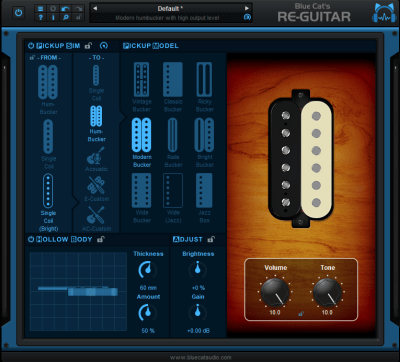
-
Then we top our efforts at achieving pristine quality in the final product by adding saturation and aggressive compression / limiting.
-
Noticed the same thing.
Edit: Yes the install set of the new update is full sized. 542Mb -
The update fixes an issue with 'Download Stems'
I'm not familiar with the issue but here's link to thread discussing it
https://discuss.cakewalk.com/index.php?/topic/389-bandlab-questionsexperiences/&page=3&tab=comments#comment-7424
Update: Here's more info:
https://discuss.cakewalk.com/index.php?/topic/389-bandlab-questionsexperiences/&do=findComment&comment=7597 -
Use Bandlab Assistant to access.
Fixes an issue created with last update in Mix Recall**.Looks like the What's New doc has not been (yet) updated for this release.
**This assumption is based on an announcement I saw yesterday by Jesse Jost that the previous update had broken Mix Recall and that a fix would be posted today.
The currently posted What's New is the same as the previous post.-
 1
1
-
-
2 hours ago, James G said:
Err...that's 'poll'..
Lol, I screwed that one up!
Thanks for the correction. It didn't quite look right, now I know why!-
 1
1
-
-
From what I've read 96k can
- bring out the best in some soft synths, think it has to do with reducing aliasing.
- but some audio interfaces are far from flat at 96k (compared to lower resolutions)
- it eats a lot more disk space.
and I'm not going to hear a difference for acoustic tracks - my ears don't hear 20k.
-
Lol - looks like you can nest anything in a spoiler but a pole (survey question kind, not the cylindrical object or person of Polish nationality).
-
Been watching this. Waiting to see what prices are.
I'm not seeing anywhere that they'll continue supporting Kontakt or for that matter dropping it, just that they're introducing a new sample player.
Maybe I missed that or they mentioned it this morning in the presentation.
-
-
Here's how to make a 'spoiler' on this forum.
To make one you need to put text in between tags [.SPOILER]spoiler text[./SPOILER]
Remove the periods before SPOILER and /SPOILER - had to use them otherwise you would not have seen code.Here's an example:
You've found it.
-
 4
4
-
-
-
nah
On 1/21/2019 at 10:47 AM, Kurre said:If this board have the ability to do it i would like to have "hidden" as a choice for text in my post.
Sometimes you want to wait a bit with the answer.
People reading the post will have to make that extra step to click on that "hidden" marking to see the text within.
I do not have a use for it just now but as i have used it in other forums, there surely would be a need for it in the future.
It's called a 'spoiler'
to make one you need to put text in between tags [.SPOILER]spoiler text[./SPOILER]
Remove the periods before SPOILER and /SPOILER - had to use them otherwise you would not have seen code.Here's an example:
Ah you see me now!
-
 2
2
-
-
PSSL KillerDailyDeal - $69.99 (MSRP $359.90) MXL 604 Small Diaphragm Condenser Microphone Pair
Sweetwater has these for $169.99 but that package may include a case and mic holders - don't know if this deal does.Description
MXL 604 Small Diaphragm Instrument Condenser Microphone Pair
Our MXL 604 instrument microphone delivers the dynamic range musicians and artists crave for acoustic guitars, drums, high-hat cymbals, pianos, percussion, stringed instruments and more. Using transformerless FET circuitry and a gold diaphragm capsule design, the 604 also features -10 dB switchable attenuation pad, low-frequency roll-off, and an interchangeable omnidirectional capsule for versatility in any recording application.
Features:
- Extremely versatile microphone for instruments
- Bass roll-off and attenuator to fit any recording situation
- Transformerless design for solid lows and open highs
- Ideal for drum overheads, acoustic guitars, pianos and strings
- Fast transient response for extra accuracy
Specifications:
- Type: Pressure gradient condenser mic
- Diaphragm: 6 micron gold-sputtered
- Capsule Size: 22mm/.87 in.
- Frequency Response: 30Hz - 20kHz
- Polar pattern: Cardioid/Omnidirectional
- Sensitivity: 15 mV/Pa
- Output Impedance: 150 ohms
- Pre-Attenuation Switch: 0 dB, -10 dB
- High Pass Filter: 6 dB/octave @ 150 Hz
- Equivalent Noise: 17 dB (A-weighted IEC 268-4)
- S/N Ratio: 77 dB (Ref. 1 Pa A-weighted)
- Max SPL for .5% THD: 137 dB
- Power Requirements: 48V phantom power (+/- 4V)
- Size: 22mm x 133mm/5.24 in. x 0.8 in.
- Weight: 0.3 lbs/136.08g
- Metal Finish: Nickel Plated
Package Includes (Click links for individual product info):- 2 x MXL 604 Small Diaphragm Condenser Microphone
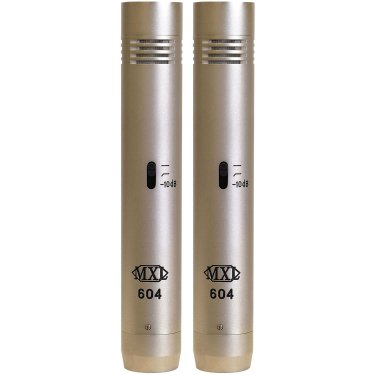
More info on this mic at Recording Hacks
http://recordinghacks.com/microphones/MXL/604
-
Sonic Visualiser by Centre for Digital Music at Queen Mary, University of London has been updated to v3.2.1.
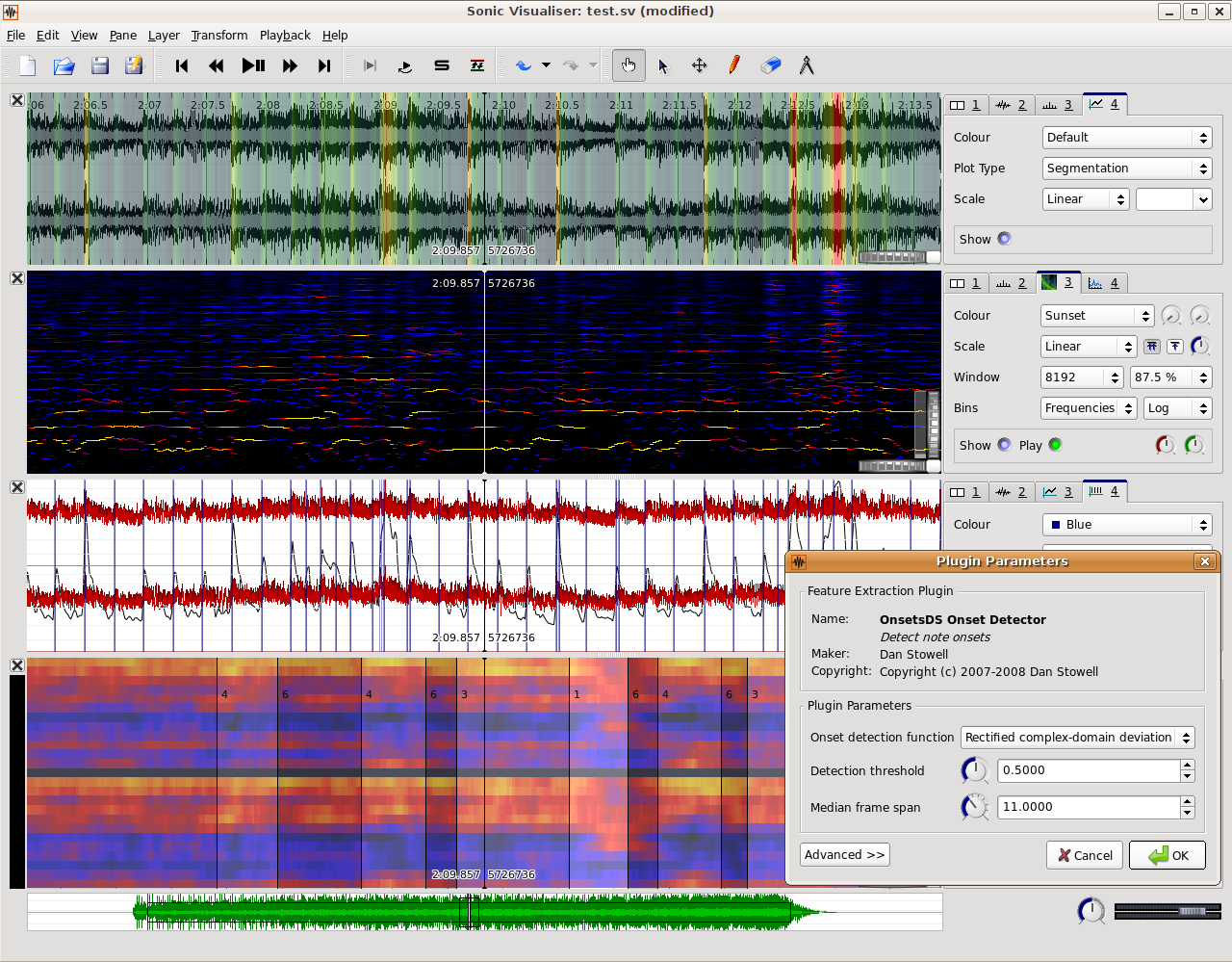
Sonic Visualiser is an application for viewing and analysing the contents of music audio files. The aim of Sonic Visualiser is to be the first program you reach for when want to study a musical recording rather than simply listen to it.
As well as a number of features designed to make exploring audio data as revealing as possible, Sonic Visualiser also has powerful annotation capabilities to help describe what you find, and the ability to run automated annotation and analysis plugins.
Features include sophisticated spectrogram views; multi-resolution waveform and data displays; manual annotation of time points and curves; measurement capabilities from spectrogram and spectrum; playback at any speed; looping and playback of discontiguous selections; ability to apply standard audio effects and compare the results with their inputs; and support for onset detection, beat tracking, structural segmentation, key estimation and many other automated feature extraction algorithms via Vamp audio analysis plugins.
Sonic Visualiser contains features for the following:
- Load audio files in WAV, Ogg and MP3 formats, and view their waveforms.
- Look at audio visualisations such as spectrogram views, with interactive adjustment of display parameters.
- Annotate audio data by adding labelled time points and defining segments, point values and curves.
- Overlay annotations on top of one another with aligned scales, and overlay annotations on top of waveform or spectrogram views.
- View the same data at multiple time resolutions simultaneously (for close-up and overview).
- Run feature-extraction plugins to calculate annotations automatically, using algorithms such as beat trackers, pitch detectors and so on.
- Import annotation layers from various text file formats.
- Import note data from MIDI files, view it alongside other frequency scales, and play it with the original audio.
- Play back the audio plus synthesised annotations, taking care to synchronise playback with display.
- Select areas of interest, optionally snapping to nearby feature locations, and audition individual and comparative selections in seamless loops.
- Time-stretch playback, slowing right down or speeding up to a tiny fraction or huge multiple of the original speed while retaining a synchronised display.
- Export audio regions and annotation layers to external files.
The design goals for Sonic Visualiser are:
- To provide the best available core waveform and spectrogram audio visualisations for use with substantial files of music audio data.
- To facilitate ready comparisons between different kinds of data, for example by making it easy to overlay one set of data on another, or display the same data in more than one way at the same time.
- To be straightforward. The user interface should be simpler to learn and to explain than the internal data structures. In this respect, Sonic Visualiser aims to resemble a consumer audio application.
- To be responsive, slick, and enjoyable. Even if you have to wait for your results to be calculated, you should be able to do something else with the audio data while you wait. Sonic Visualiser is pervasively multithreaded, loves multiprocessor and multicore systems, and can make good use of fast processors with plenty of memory.
- To handle large data sets. The work Sonic Visualiser does is intrinsically processor-hungry and (often) memory-hungry, but the aim is to allow you to work with long audio files on machines with modest CPU and memory where reasonable. (Disk space is another matter. Sonic Visualiser eats that.).
-
At Guitar Center online - saw a blurb somewhere that this was a one day sale but can't confirm that.
https://www.guitarcenter.com/XILS-lab/XILS-StiX.gc
Overview
StiX offers an incredible variety of drums sounds of different eras : Vintage analog drum machines, or early digital ones. And many sound of the next eras.
Synthesis: Virtual Analog morphing oscillators, FM @ audio rate, Sine + Waveshaping, Samples, CroSS Synthesis. 4th Gen 0DF Filters, Macros Knobs, Step Modulators, LFOs, Unique R-Clap Evs and ADSR, exclusive PolyStep auto-modulator: A whole synthesizer to taylor each of the 10 drum sounds.
Sequencing: Variable number of steps per Beat. Per Step Divisi, Gate Time, Micro Position, Macro Modulators, Velocity. Song Mode to organize patterns.
Workflow: FAST, intuitive. XoX Sequencer Multiline and SingleLine views, Synthesis Eazy And Advanced pages. Never more than a click away from your task. Exclusive Stretch and Modal Pitch Macro Controls, Global user defined Macros controls.
Presets: 2000 presets: 120+ Global Presets, 720+ Patterns, 700 Drumpads, 60 Drumkits, 390 exclusive samples. And still growing.Features
- MIDI Output: Control your virtual instruments, or record the MIDI data in your Daw
- MIDI Learn: Full automation of all synthesis parameters of all drumpads, mixer etc
- Drums of the Past: 15 Wave Alchemy Drumkits ( Roland TR-xox, EMU SP12, Drumtracks, Linndrum etc )
- Multi criteria Database engine: Find the right preset in minute,? create custom tags?
- Randomize: Drumkits, sequences, full patterns
- Live Control: Chain patterns, mute/unmute tracks on the fly.
- Swing: Sophisticated swing engine
- Multi Output version: With volume, groups and pan preservation
- Natural Reverb, Analog Delay & Phaser, Per drum crusher and distorsion
- Sample Accurate synchro and audio engine: The tightest beats for your tracks
- Envelope segments modulations, hundreds of modulation targets. Simultaneously.
- Gang Mode to edit Sequencer Lanes, mixer, effects sends
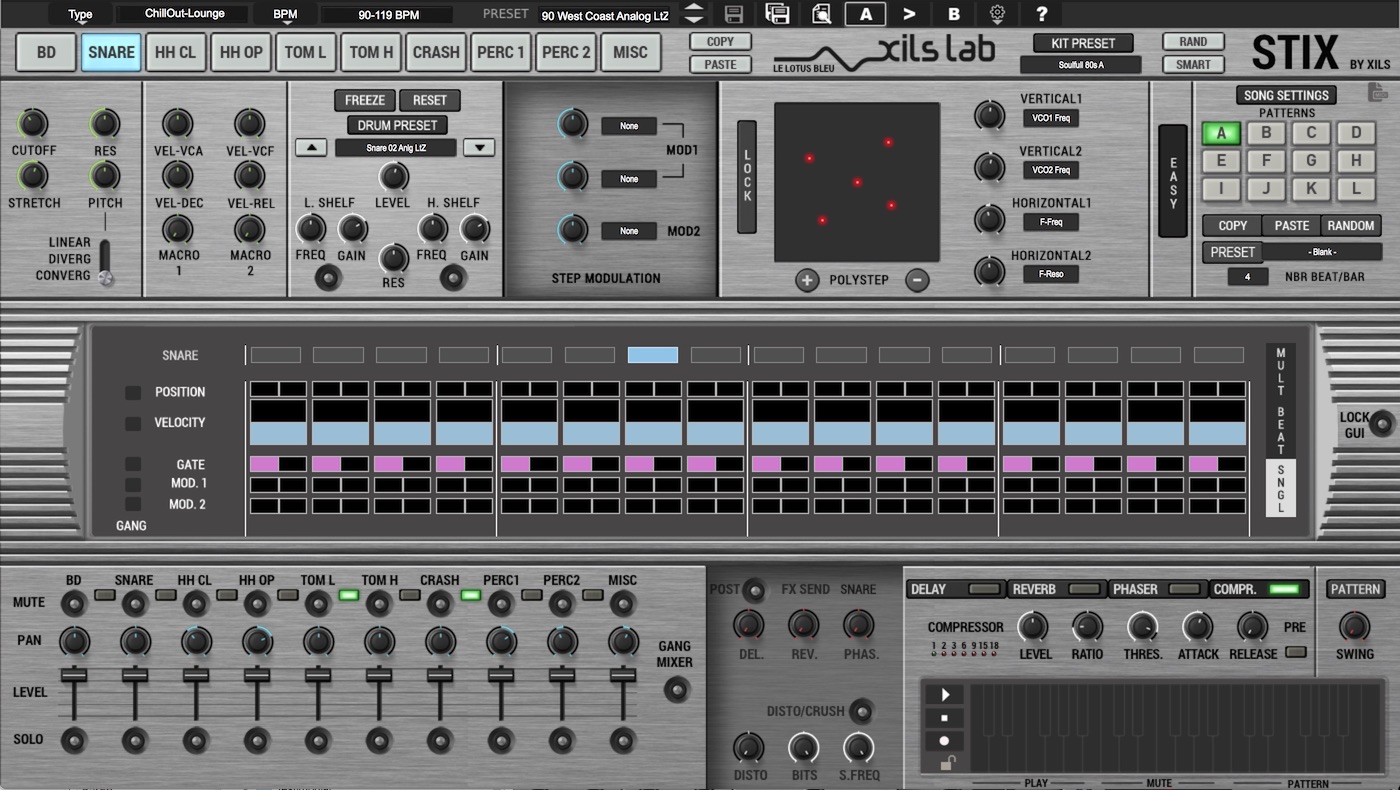
-
On 1/20/2019 at 5:46 AM, msmcleod said:
Yesterday I was looking at ways to calm the harshness of the pizeo pickup on my DI's acoustic guitar.
I'd seen IR's for reverb and cabinets, but I was wondering if anyone had done them for the actual guitar body. Turns out 3Sigma Audio has:
https://www.3sigmaaudio.com/acoustic-impulses/
So what these claim to do is take my harsh DI'd acoustic guitar and make them sound as if it came out of an expensive guitar body, mic'd with an expensive mic. Whilst it didn't make my guitar sound exactly like a Martin, it did give it that mic'd sound and took away the piezo harshness.
Overloud TH3 (bundled with CbB) comes with an IR Cabinet effect, so this is what I did to get the sound I wanted:
Note: These IR's are QUIET, so you'll have to crank the output considerably.
Before: http://msmcleod.co.uk/cakewalk/piezo_guitar_DI_with_IR_before.wav
After: http://msmcleod.co.uk/cakewalk/piezo_guitar_DI_with_IR_after.wav
Good post msmcleod!
That technique can help acoustify (is that a real word? can we copyright it if not?) a DI recorded guitar.There are a number of acoustic guitar IRs out there, where instead of capturing sound of a room they capture sound of a guitar body.
Here's a free Taylor Guitar set that uses a variety of mics
https://drive.google.com/a/t-sciences.com/file/d/0B1XgNa5vH3j1ZkVoTFJLQ241WTg/view
I found this mentioned on a Line6 thread (where there are also links to other kinds of IRs)
https://line6.com/support/topic/26822-free-irs/You might also try hunting / googling for IRs or checking KVR (they use to have links for posts & links for IRs but I haven't checked in quite a while).
-
 2
2
-
 1
1
-
-
Looking through The Audio Programming Book...
Initial impression
It's a college text book (if not it reads like one) to teach nonprogrammers/nontechnical musicians C programming of Audio & MIDI.The assumption is that you know nothing - not what a sine wave is or what makes a line of code.
So if you need ALL of the basics this is probably a great book.
Depending on your experience/knowledge you might get frustrated looking for details that you do need buried in a lot of stuff you don't.
Edit: abacab I just saw your post - agreed.
Still going to spend some time with it (LOL to see if I can make the most of my huge $15 investment).
-
Interesting old thread on KVR:
Collection of Audio Programming Books https://www.kvraudio.com/forum/viewtopic.php?t=387466The creator of that post says that
-
Designing Audio Effect Plug-Ins in C++: With Digital Audio Signal Processing Theory.
http://www.amazon.com/dp/024082515
was "readable and easy to understand." vs The Audio Programming Book which he pans.
It's around $35 (give or take a couple of bucks) for paperback copy on amazon. -
Designing Audio Effect Plug-Ins in C++: With Digital Audio Signal Processing Theory.
-
Just a heads up the ebook The Audio Programming Book does not come with the supplemental content (40 chapters!) that come on the DVD you would get if you purchased the book and unfortunately that's where, AFAIC, is a lot the real meat.
An accompanying DVD provides an additional 40 chapters, covering musical and audio programs with micro-controllers, alternate MIDI controllers, video controllers, developing Apple Audio Unit plug-ins from Csound opcodes, and audio programming for the iPhone.
Edited Jan 28th - This post is no longer true. During the last day or two or three Humble Bundle has updated downloads to include supplemental material. See info on following links.
-
 1
1
-
 1
1
-
-




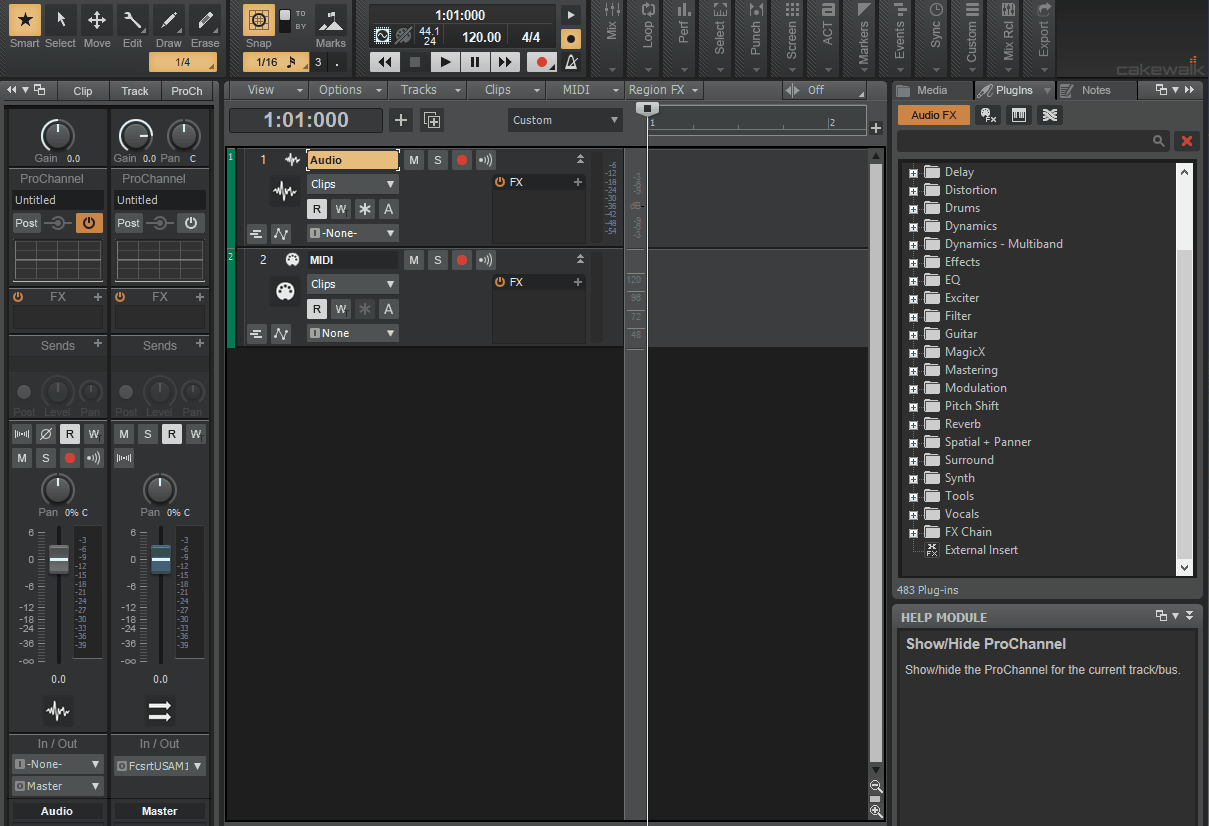

Cakewalk Update 25.010.27 now available
in Deals
Posted · Edited by TheSteven
If you make it simple how are we suppose to screw it up?
(but really - thanks for your help and making things more transparent and easier)